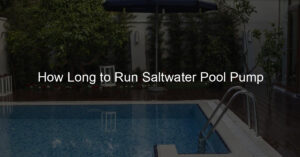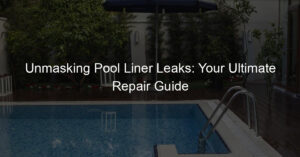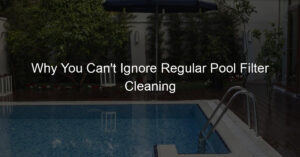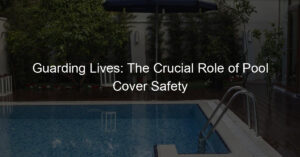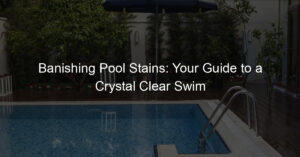Introduction to Pool Shock Treatment
When it comes to maintaining a clean and healthy swimming pool, one of the key steps is pool shock treatment. This process is crucial to keep your pool water sparkling clean and free from harmful bacteria and algae. In this section, we will delve into the importance of pool shock treatment and how it contributes to overall pool maintenance.
- Understanding the Importance of Pool Shock Treatment
- How Pool Shock Treatment Contributes to Overall Pool Maintenance
Pool shock treatment, also known as superchlorination, is a method used to keep pool water safe and clean. It involves adding a large amount of chlorine to the pool to kill bacteria, algae, and other microorganisms. This process is crucial as it helps to maintain the chemical balance of the pool water, ensuring it is safe for swimming.
Without regular pool shock treatment, your pool water can become cloudy, green, or even unsafe for swimming. It can lead to the growth of harmful bacteria and algae, which can cause skin irritation and other health problems. Therefore, understanding the importance of pool shock treatment is essential for every pool owner.
Pool shock treatment is a vital part of overall pool maintenance. It works hand in hand with other pool maintenance tasks such as regular cleaning, filtration, and balancing of pool chemicals.
By eliminating bacteria and algae, pool shock treatment helps to maintain the clarity and color of the pool water. It also helps to prevent the build-up of chloramines, which are responsible for the strong chlorine smell often associated with swimming pools. Furthermore, regular pool shock treatment can prolong the life of your pool equipment by preventing corrosion and other damage caused by bacteria and algae.
In conclusion, pool shock treatment is an essential part of pool maintenance that ensures your pool remains clean, safe, and enjoyable for everyone. By understanding its importance and how it contributes to overall pool maintenance, you can ensure that your pool remains in top condition all year round.
Understanding Pool Maintenance
Maintaining a swimming pool is not as daunting as it may seem. With the right knowledge and tools, you can keep your pool clean and safe for everyone to enjoy. Let’s dive into some basic pool cleaning tips.
Basic Pool Cleaning Tips
There are two fundamental aspects you need to understand when it comes to pool maintenance: the importance of regular cleaning and the tools required for effective pool cleaning.
- The Importance of Regular Cleaning
- Tools Required for Effective Pool Cleaning
- Pool Skimmer: This tool is used to remove leaves, bugs, and other debris from the surface of the pool.
- Pool Brush: A pool brush is used to scrub the walls and floor of the pool to prevent algae build-up.
- Pool Vacuum: This device is used to remove debris that has sunk to the bottom of the pool.
- Pool Test Kit: A test kit is necessary to check the chemical levels in your pool to ensure it is safe for swimming.
Regular cleaning is crucial for maintaining the health and longevity of your pool. It prevents the build-up of algae and bacteria, which can lead to murky water and potential health risks. According to a study by the Centers for Disease Control and Prevention, there were nearly 500 disease outbreaks related to recreational water use between 2000 and 2014, many of which could have been prevented with proper pool maintenance. Regular cleaning also helps to keep your pool looking its best, making it a more enjoyable place to swim and relax.
Having the right tools is key to effective pool cleaning. Here are some essential items you’ll need:
By understanding the importance of regular cleaning and equipping yourself with the right tools, you can ensure your pool remains a clean, safe, and enjoyable place for everyone.
Pool Water Balance
Keeping your pool water balanced is a crucial part of pool maintenance. It involves managing the pH levels and ensuring the water is safe and comfortable for swimming. Let’s dive into the details.
- Understanding pH Levels
The term pH stands for ‘potential of Hydrogen’. It is a measure of the acidity or alkalinity of your pool water. The pH scale ranges from 0 to 14. A pH level of 7 is considered neutral. If the pH level is below 7, the water is acidic. If it’s above 7, the water is alkaline or basic.
For swimming pools, the ideal pH level is slightly alkaline, between 7.2 and 7.6. This range is safe for swimmers and helps chlorine work effectively. If the pH level is too high or too low, it can cause problems like skin irritation and damage to pool equipment.
- How to Test and Adjust Pool Water Balance
Testing your pool water balance is simple and can be done using a pool water test kit. These kits usually include testing strips that change color when dipped in the pool water. The color can then be compared to a chart to determine the pH level.
If your pool water is not balanced, you’ll need to adjust it. If the pH level is too low, you can add a base, like soda ash, to increase it. If the pH level is too high, you can add an acid, like muriatic acid or sodium bisulfate, to lower it.
Remember, adjusting pool water balance should be done gradually. Add small amounts of chemicals, retest the water after a few hours, and adjust as needed. This process ensures the water does not become too acidic or alkaline quickly, which could be harmful.
Keeping your pool water balanced is a key part of maintaining a clean, safe, and enjoyable swimming pool. By understanding pH levels and learning how to test and adjust your pool water balance, you can ensure a great swimming experience for everyone.
What is Chlorine Shock?
Chlorine shock, also known as pool shock, is a crucial part of maintaining a clean and safe swimming pool. But what exactly is it, and how does it work? Let’s dive in and find out.
- Definition and Purpose of Chlorine Shock
- How Chlorine Shock Works in Pool Sanitization
Chlorine shock is a powerful pool cleaning agent. It’s a high dose of chlorine, much stronger than the regular amount you’d add to your pool. The purpose of a chlorine shock is to kill bacteria, algae, and other microorganisms that can build up in your pool over time. It’s like a deep clean for your pool, helping to keep the water crystal clear and safe for swimming.
So, how does chlorine shock work its magic? When you add a chlorine shock to your pool, it rapidly increases the chlorine level. This high level of chlorine is powerful enough to kill off the unwanted bacteria and algae. It also breaks down harmful chemicals in the water, like ammonia and nitrogen. Once the chlorine shock has done its job, the chlorine level in your pool will gradually return to normal. This leaves your pool water clean, clear, and ready for swimming.
Remember, a chlorine shock is a powerful treatment, so it’s important to use it carefully. Always follow the instructions on the packaging, and make sure to wait the recommended amount of time before going for a swim. With proper use, a chlorine shock can help you maintain a clean and healthy pool all summer long.
How to Shock a Pool
Shocking a pool is a crucial part of maintaining a clean and safe swimming environment. This process involves adding a large amount of chlorine or non-chlorine chemicals to kill bacteria and algae. Here is a simple, step-by-step guide on how to shock your pool effectively.
Step-by-Step Guide
- Choosing the Right Pool Shock Product
- Preparing Your Pool for Shock Treatment
- Applying the Shock Treatment
- Post-Treatment Care and Maintenance
There are several types of pool shock products available in the market, including chlorine-based and non-chlorine-based shocks. It’s important to choose the right product based on your pool’s specific needs. Chlorine-based shocks are powerful and fast-acting, while non-chlorine shocks are gentle on pool surfaces and swimwear.
Before applying the shock treatment, ensure your pool is ready. This involves balancing the pool water’s pH level, which should ideally be between 7.2 and 7.6. Also, remove any debris from the pool using a net or pool vacuum.
To apply the shock treatment, follow the instructions on the product package. Generally, you’ll need to dilute the shock in a bucket of water before adding it to the pool. It’s best to do this in the evening or at night when the sun won’t break down the chlorine.
After shocking your pool, it’s important to maintain it properly. Run the pool filter for at least 8 hours after the treatment. Also, test the water regularly to ensure the chlorine levels are safe before swimming. Remember, regular pool maintenance is key to keeping your pool clean and safe for everyone.
Shocking a pool might seem like a daunting task, but with the right products and a little bit of time, it can be a simple and effective way to keep your pool clean and safe. Remember, a well-maintained pool is a happy pool!
Swimming Pool Cleanliness
Keeping your swimming pool clean is an essential aspect of pool ownership. Not only does it make your pool more inviting, but it also helps to keep swimmers safe and healthy. Let’s delve into the importance of regular maintenance and the benefits it brings.
Importance of Regular Maintenance
Regular maintenance of your swimming pool is not just about keeping the water sparkling clean. It’s about ensuring the pool environment is safe and healthy for everyone who uses it. It’s about preventing the growth of harmful bacteria and algae, maintaining the right chemical balance, and ensuring all equipment is working correctly.
- Benefits of maintaining a clean pool
- Consequences of neglecting pool cleanliness
There are numerous benefits to maintaining a clean pool. For starters, it enhances the overall appearance of your pool, making it more inviting. It also extends the lifespan of your pool and its equipment, saving you money in the long run. Most importantly, a clean pool is a healthy pool. It prevents the spread of bacteria and diseases, ensuring the safety of swimmers.
Neglecting pool cleanliness can lead to several problems. The most obvious is the growth of algae, which can make your pool look unappealing and can also cause slip and fall accidents. Neglect can also lead to imbalances in your pool’s chemical levels, which can irritate swimmers’ skin and eyes. In the worst cases, neglecting pool cleanliness can lead to the spread of diseases and infections.
Remember, regular pool maintenance is not just about cleanliness; it’s about safety and health. So, make it a priority to keep your pool clean and well-maintained. Your swimmers will thank you for it!
Pool Sanitization
Keeping your swimming pool clean and safe is a top priority. One of the most important aspects of pool maintenance is sanitization. Sanitization helps to keep the water clear, free from harmful bacteria and safe for swimming. There are two main methods of pool sanitization: chemical and physical sanitization. Let’s take a closer look at each of these methods.
Methods and Techniques
There are several methods and techniques used to sanitize a pool. The two most common are chemical and physical sanitization. Both methods are effective, but they work in different ways and have different advantages and disadvantages.
- Chemical Sanitization
- Physical Sanitization
Chemical sanitization is the most common method used to keep pools clean. This method involves adding chemicals, such as chlorine or bromine, to the pool water. These chemicals kill bacteria and other microorganisms, keeping the water safe for swimmers.
One of the key benefits of chemical sanitization is its effectiveness. When used correctly, chemical sanitizers can kill a wide range of harmful organisms. However, it’s important to monitor chemical levels regularly to ensure they remain within safe limits. Too much chemical can irritate skin and eyes, while too little may not effectively kill bacteria.
Physical sanitization involves using physical methods to remove contaminants from the pool. This can include filtration systems, which trap debris and bacteria, and UV or ozone systems, which use light or ozone gas to kill bacteria.
Physical sanitization methods can be very effective, but they often require more equipment and maintenance than chemical methods. However, they can be a good choice for those who are sensitive to pool chemicals or prefer a more natural approach to pool maintenance.
In conclusion, both chemical and physical sanitization methods can be effective in keeping your pool clean and safe. The best choice depends on your specific needs, preferences, and the type of pool you have. Always remember, a well-sanitized pool is a happy and healthy pool!
Preventing Pool Algae
Keeping your swimming pool clear and free of unwanted algae is an essential part of pool maintenance. Algae can not only make your pool look unattractive, but it can also cause damage to your pool equipment. Let’s dive into understanding the causes of pool algae and explore effective strategies for prevention.
- Understanding the Causes of Pool Algae
- Improper chemical balance: A pool with a low level of chlorine or other sanitizing chemicals is a breeding ground for algae.
- Poor circulation: Algae can grow in areas where water is stagnant or not circulating properly.
- Lack of sunlight: Algae thrive in sunlight, but certain types can also grow in shaded areas of your pool.
- Effective Strategies for Algae Prevention
- Maintain proper chemical balance: Regularly test your pool water and adjust the chemical levels as needed. This includes maintaining an appropriate level of chlorine or other sanitizing chemicals.
- Ensure good water circulation: Run your pool pump and filter system regularly to keep the water moving and prevent algae from settling.
- Brush and vacuum your pool: Regularly brushing and vacuuming your pool can remove algae spores before they have a chance to grow.
- Shock your pool: Regular pool shocking can kill algae spores and prevent them from multiplying.
Algae are small plants that thrive in water and sunlight. They can enter your pool through various means such as wind, rain, or even on the swimsuits of those using the pool. Once in the pool, if conditions are right, they can multiply rapidly and turn your pool water green.
Factors that contribute to algae growth include:
Preventing algae in your pool is easier than trying to get rid of it once it has taken hold. Here are some effective strategies:
Remember, prevention is always better than cure. By understanding the causes of pool algae and implementing these effective strategies, you can enjoy a clean, clear, and algae-free pool.
Managing Pool Chemical Levels
Keeping your pool clean and safe is a top priority for any pool owner. A key part of this process is managing pool chemical levels. This involves regular testing and adjusting of these levels to ensure optimal pool health.
Importance of Regular Testing
Regular testing of your pool’s chemical levels is crucial. It helps maintain the right balance of chemicals, which is essential for the health of those using the pool and the longevity of the pool itself. Let’s delve into the specifics of how to test pool chemical levels and how to adjust them for optimal pool health.
- How to Test Pool Chemical Levels
- Collect a sample of your pool water in a clean container.
- Dip the test strip into the water sample or add the required number of drops of the liquid reagent.
- Compare the color change on the test strip or in the water sample with the color chart provided with the kit. This will indicate the levels of different chemicals in your pool.
- Adjusting Chemical Levels for Optimal Pool Health
- If the chlorine level is too low, you can add more chlorine to your pool. If it’s too high, you can reduce the amount of chlorine you’re adding or use a chlorine neutralizer.
- If the pH level is too high, you can add a pH reducer. If it’s too low, you can add a pH increaser.
- For alkalinity and calcium hardness, you can use increasers or reducers as needed.
Testing your pool’s chemical levels is a simple process that can be done using a pool testing kit. These kits usually come with test strips or liquid reagents that react with the chemicals in your pool water to indicate their levels.
Here’s a simple step-by-step guide:
Once you’ve tested your pool’s chemical levels, you may need to adjust them to ensure optimal pool health. Here’s how:
Remember, it’s important to add chemicals gradually and retest the water after each adjustment to avoid overcorrection.
By regularly testing and adjusting your pool’s chemical levels, you can ensure a clean, safe, and enjoyable swimming experience for everyone.
Conclusion: Mastering Pool Shock Treatment
As we bring our discussion on pool shock treatment to a close, it’s essential to revisit the key points and understand how mastering this process can lead to ultimate cleanliness in your pool.
- Recap of key points
- Final thoughts on pool shock treatment for ultimate cleanliness
Throughout this guide, we’ve explored the importance of pool maintenance and the role of chlorine shock in keeping your pool clean and safe. We’ve learned how to shock a pool, the significance of maintaining chemical levels, and the prevention of pool algae. All these elements contribute to the overall sanitization of your pool, ensuring a healthy and enjoyable swimming environment.
Mastering pool shock treatment is not just about keeping the water clear; it’s about safeguarding the health of everyone who uses the pool. Regular pool maintenance, including shock treatment, is a critical task for any pool owner. By understanding and applying the information shared in this guide, you can ensure your pool remains a clean, safe, and inviting place for everyone to enjoy.
Remember, a clean pool is a happy pool. And a happy pool means happy swimmers. So, take the time to master the art of pool shock treatment. Your pool, your family, and your friends will thank you.



